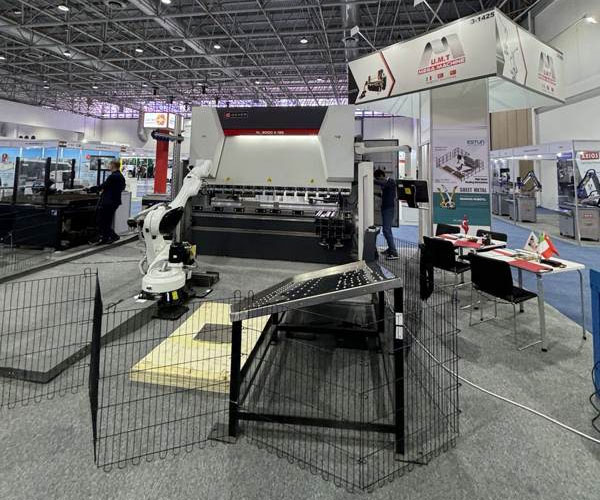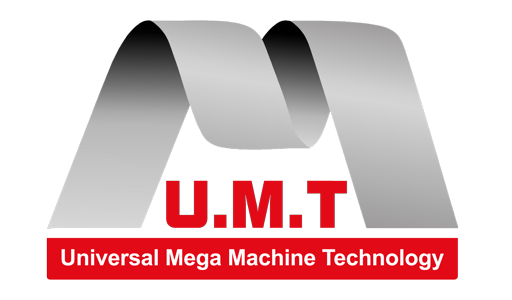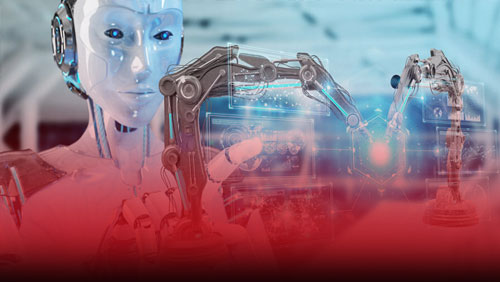Robotic systems will transform the production line
In recent years, the metal industry has undergone a significant transformation, largely driven by the integration of robotic systems into production lines. These advancements have not only increased efficiency and precision but have also redefined the roles of human workers and reshaped the overall manufacturing process.
Automation and Efficiency
One of the primary benefits of using robotics in metal manufacturing is the dramatic improvement in efficiency. Traditional manual labor is often slow and subject to human error, while robotic systems can operate continuously with high accuracy. Tasks such as welding, cutting, and material handling, which are crucial in metal production, can now be performed by robots with greater speed and consistency. This leads to faster production cycles, reduced waste, and increased output.

Precision and Quality Control Modern robotic systems
Robotic systems excel in maintaining precision, which is critical in metalworking where small errors can lead to significant material loss or product defects. Advanced sensors and AI-powered software allow robots to execute tasks with millimeter-level accuracy. Moreover, robotic arms can be programmed to replicate the same process thousands of times without variation, ensuring a high level of quality control that is difficult to achieve with manual labor alone.
Safety Improvements
Working in metal industries involves exposure to extreme temperatures, sharp edges, and heavy machinery, posing significant risks to human workers. By automating hazardous tasks, robotic systems help reduce workplace injuries and fatalities. Robots can be deployed in environments that are dangerous or unhealthy for humans, such as those involving toxic fumes or high heat, thereby improving overall workplace safety.
Flexibility and Customization
Modern robotic systems are not only precise and efficient but also highly flexible, enabling manufacturers to respond swiftly to evolving market needs. Through the integration of advanced smart technologies and machine learning, these robots can independently adapt to changes in product design and manufacturing processes with minimal reprogramming or downtime. This level of adaptability allows companies to easily switch between different product specifications, produce small batches, or customize products to meet individual customer requirements without sacrificing speed or quality. Such flexibility is particularly valuable in an industry where consumer preferences are continually shifting toward more personalized products, shorter lead times, and rapid delivery. As a result, robotic systems empower manufacturers to stay competitive, foster innovation, and better meet the demands of a dynamic marketplace.
Challenges and the Future Outlook
Despite their advantages, the adoption of robotic systems in metal industries does come with challenges. High initial investment costs, the need for skilled technicians to operate and maintain the systems, and resistance to change among the workforce are some of the hurdles. However, as technology becomes more affordable and accessible, and as the benefits continue to outweigh the drawbacks, it is expected that robotic systems will become even more widespread.

In conclusion
The integration of robotic systems into the production lines of the metal industry marks a major technological advancement with far-reaching implications. It significantly improves efficiency by automating repetitive and labor-intensive tasks, which not only accelerates production processes but also reduces operational costs. Additionally, it enhances product quality through precise and consistent manufacturing, minimizing errors and waste. The use of robotics also ensures better worker safety by taking over hazardous tasks, thereby reducing workplace injuries and creating a safer environment. Moreover, robotics allows for greater flexibility in manufacturing, enabling quick adjustments to production lines to accommodate different products or custom orders. As this trend continues to evolve and expand, the metal industry is poised to become more competitive, fostering innovation and driving sustainable practices that can meet the demands of a rapidly changing global market.




